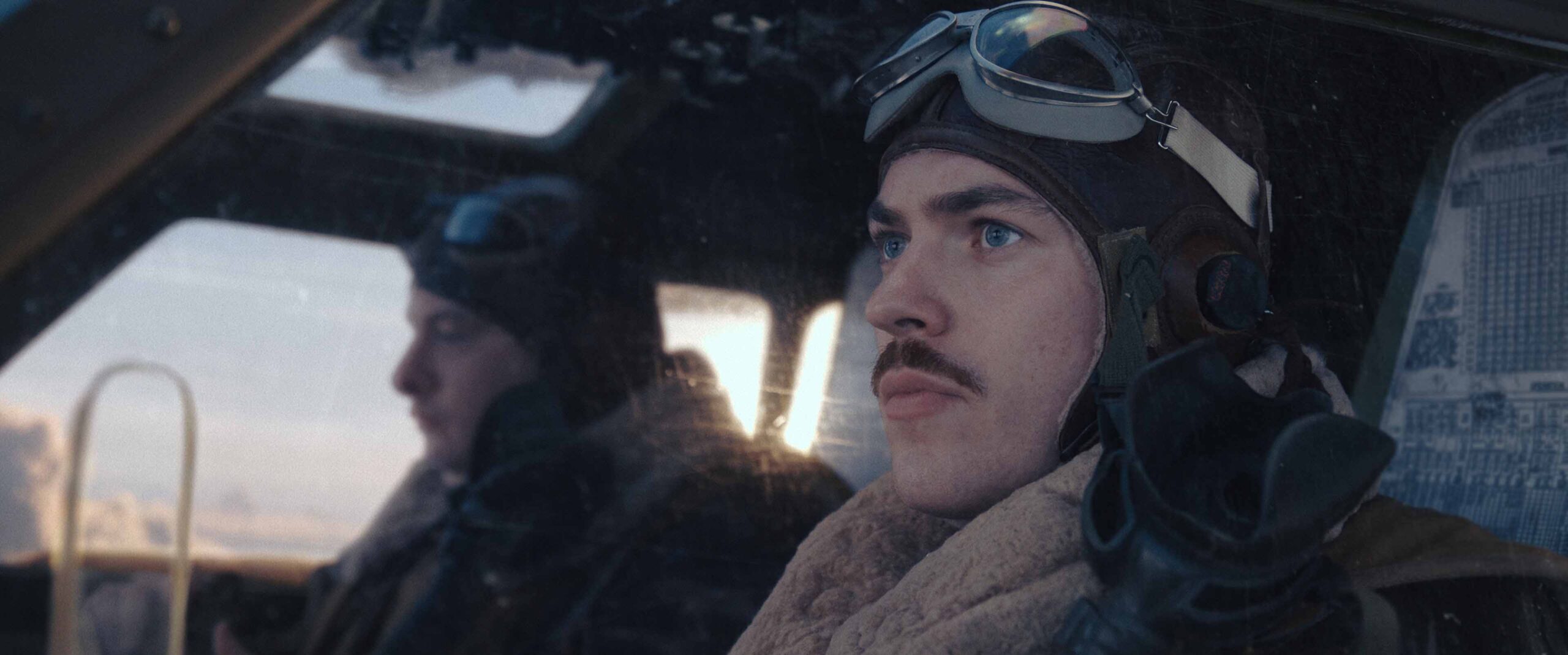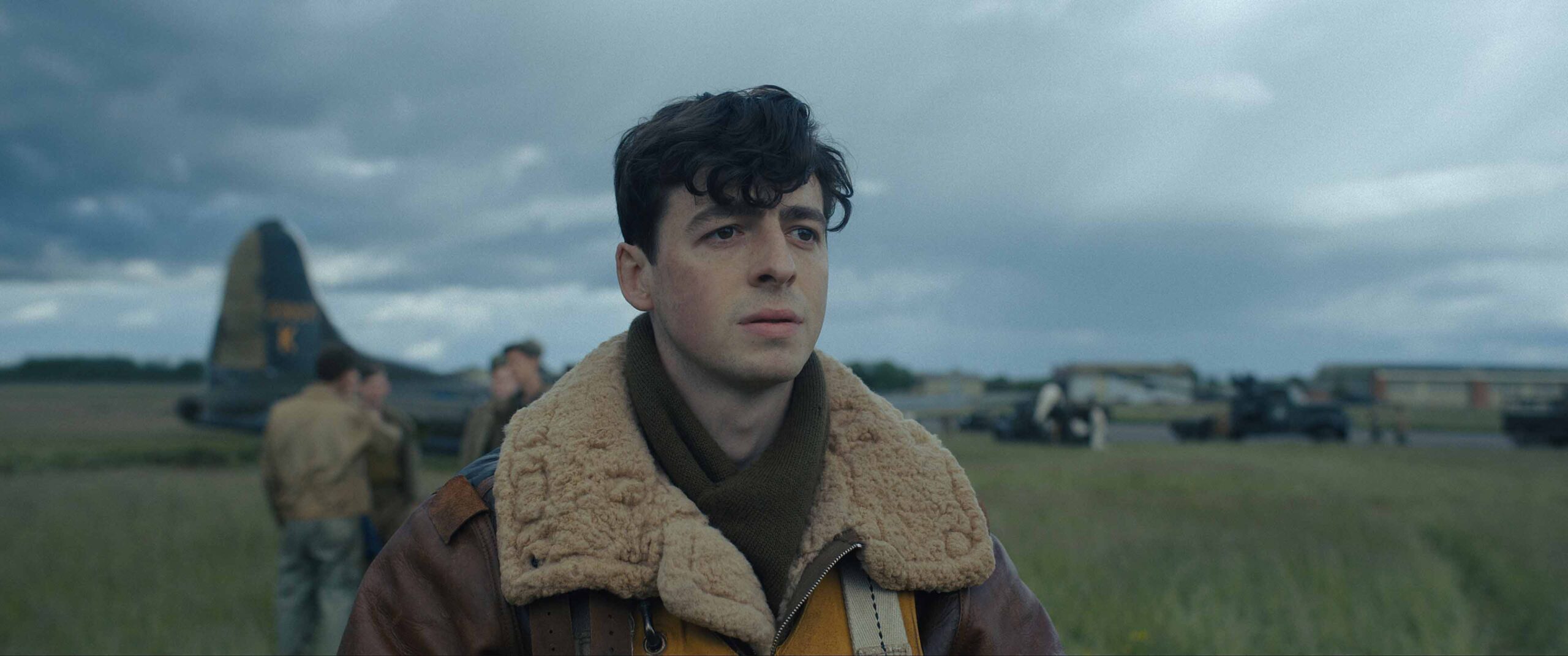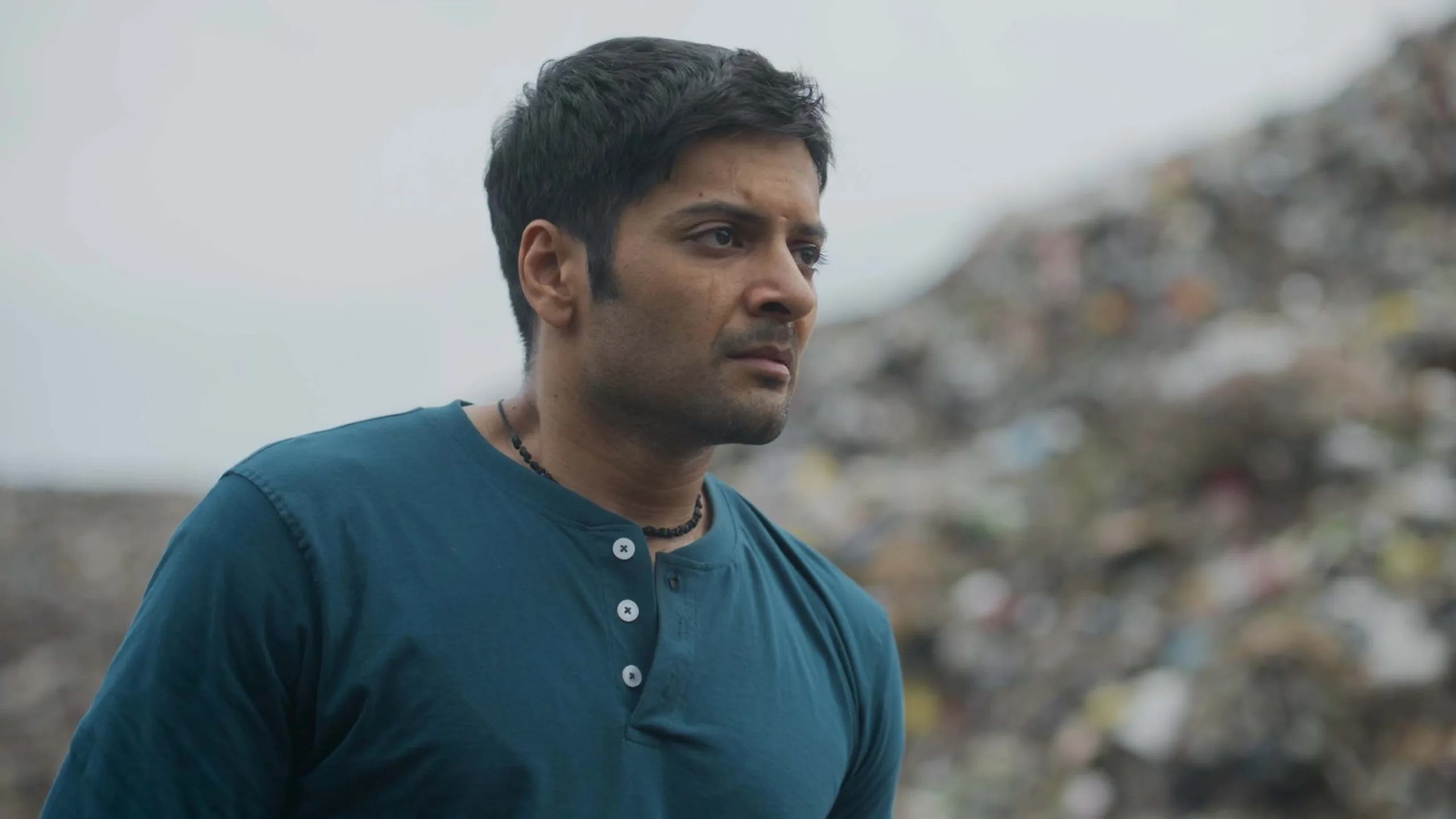It’s unlike Band of Brothers and The Pacific in more ways than one—and possibly the last of its kind in the dusk of TV’s fading golden age.
Akhil Arora, a member of the Film Critics Guild and a Rotten Tomatoes-certified film critic with over eight years of experience

Ever since Apple unveiled its Netflix competitor roughly four years ago, it has shown an interest in big-budgeted prestige dramas in a bid to be a part of the conversation alongside the likes of HBO (House of the Dragon) and Amazon Prime Video (The Lord of the Rings: The Rings of Power). But its attempts in the past have been a mixed bag. Save for the excellent trilingual Pachinko, Apple TV+ has failed to land a show that can establish it as a powerhouse. It hasn’t stopped trying, but its many attempts—For All Mankind, Monarch: Legacy of Monsters, Foundation, Invasion, or See—have been on a gradual scale of satisfying to utterly unwatchable. Enter its latest and most expensive gamble, made on a reported budget of $250 million: Masters of the Air.
Rickety WWII planes up in the air
Billed as a companion piece to World War II miniseries Band of Brothers (brilliant) and The Pacific (quite good)—Tom Hanks and Steven Spielberg return as executive producers—Masters of the Air takes us to the skies of the European theatre of the global conflict. Naturally, then, rather than the infantry in Brothers and Marines in Pacific, the Apple TV+ miniseries follows pilots, gunners, navigators, and bombardiers. But while the profession of the protagonists might have changed, the treatment hasn’t. For the most part, Masters of the Air features understated acting and direction. Cary Joji Fukunaga, the director behind the most recent Bond film (who stands accused of grooming and sexual harassment), handles nearly half of the series’ nine-episode run.
While Fukunaga is credited on the first four episodes, the next four are evenly split between the duo behind Captain Marvel and the director of Netflix’s Mudbound. That leaves the Masters of the Air finale, directed by Tim Van Patten, who has three Pacific episodes to his name. The lead writer is John Orloff—he wrote a couple of Brothers episodes—who developed the Apple miniseries based on Donald L. Miller’s book of the same name.
In addition to the well-commandeered drama, Masters of the Air also excels in the technical fields. Particularly, the soundscape and sound design—more so if you experience it on a 5.1 surround setup like I did—make you feel the rickety nature of the WWII planes. As their thin metal sheets shake and vibrate amidst the turbulence, the gunfire, and the anti-aircraft weaponry, you feel that, too, as an audience. You are fully immersed. (The cinematography complements it wonderfully.) It’s like a retro-era Top Gun: Maverick of sorts but a lot more harrowing.
Masters of the Air: a series of suicide missions
Set across a two-year period from May 1943 to May 1945, Masters of the Air follows the 100th Bomb Group of the US Air Force on their bombing runs across France, Germany, and Norway. Their aim, as a character says early on, is to bring the war to Hitler’s doorstep. But unlike the UK’s Royal Air Force, which conducted indiscriminate raids in the relative safety of the night, the Americans were tasked with precision bombing—destroying specific targets that were of military significance—which meant going out in bright daylight. Essentially, the Apple TV+ miniseries chronicles a series of suicide missions. They are repeatedly sent deep into enemy territory, into the heart of Hitler’s Nazi Germany, where you would face the heaviest resistance.
Moreover, they were operating without modern aids. There’s no laser-guided stuff here. If there are clouds, the mission is doomed. You can’t bomb what you can’t see. And there’s no radar in the planes—the 100th flew the B17, nicknamed the Flying Fortress for its array of machine guns—and you’ve to rely on your eyes for everything. You don’t really see your enemy, as they are either zipping past you at jet speeds or firing anti-aircraft rounds from below (flak, as it was called then). There’s an eerie quiet between the two, and Masters of the Air perfectly captures that feeling. The respite from the constant flak bombardment turns into a sense of dread as the bombers scan for the German jets that are about to come and pick them off one by one.

Abandoned and left to die
Given all of that, heavy casualties were inevitable. One of the most devastating scenes comes in the fifth episode of Masters of the Air when an interrogator lists tail number after tail number—that’s how you identify a plane—and the survivors list what they noted down. In nine out of 10 cases, the reply is “no record”. And when they do have info, it’s either “blown up” or “no chutes”, which all but guarantees no one made it. There’s no body, no grave, and no knowledge of what happened to many of them. No record. The airmen felt they were being abandoned and left to die up there—fighter jets couldn’t protect them on the long journeys—and were further incensed when the number of missions before they got to go home was increased midway through deployment. Like a bait and switch.
Because of the nature of what happened to the 100th Bomb Group—it soon earned the moniker the Bloody Hundredth—the cast of the Apple miniseries keeps evolving. Austin Butler (Elvis) and Callum Turner (Fantastic Beasts: The Secrets of Dumbledore) play real-life pilots Gale “Buck” Cleven and John “Bucky” Egan, while Anthony Boyle (The Plot Against America) is cast as navigator Harry Crosby. While those three have more screentime than any, the second half of Masters of the Air brings in Nate Mann (Licorice Pizza) as pilot Robert “Rosie” Rosenthal. But everyone else comes and goes. The fact the characters don’t continue throughout communicates what the series is trying to say—how brutal, bloody, and transient their lives and journeys were.
Masters of the Air isn’t always masterly
The series evolves in terms of storytelling, too. As it goes on, Masters of the Air throws us behind enemy lines and offers a look at life outside of the war in England. One episode (directed by Rees) takes us to Italy and features the Tuskegee Airmen, African American pilots who fought in WWII, with Ncuti Gatwa (Sex Education) getting the tiniest of roles. This allows the Apple miniseries to explore the duality of what the US was fighting. While the Nazis segregated German society on ethnic lines (and systematically killed off millions), American society was segregated on racial lines. During the war, African Americans weren’t allowed to serve in the same regiment as their white counterparts. Unfortunately, it’s too brief an inclusion and feels like an afterthought.

That’s not the only curious choice in Masters of the Air. The fate of a major character is deliberately clouded by an offscreen disaster—it almost feels like the actor wasn’t available for that leg of production due to pandemic protocols or something. (The Apple miniseries was filmed in England starting early 2021.) But the much more dubious one rears its head in the final few episodes when Masters visibly acknowledges the Holocaust. A scene in the finale is a ghastly showcase of the Nazi horrors and is followed by a “they got it coming” dialogue. The latter bit is entirely unnecessary—it’s a way to ease the conscience and valorise the actions of the Americans.
But the Apple TV+ series fumbles the ball and compounds this error by not training a similar lens elsewhere. At one point, when the 100th are tasked with bombing a critical railway junction in the centre of a German city, a crew member notes that he didn’t sign up to bomb women and children—after all, collateral damage is inevitable. But there’s no mention of this thereafter for the rest of the series’ run. Masters of the Air tries to tiptoe around how civilians were indeed bombed and killed in air raids. Unlike the Army and Navy, who mostly always know who they are fighting, the Air Force drops bombs sight unseen. You trust you know who’s on the ground, but you can never be sure.
Masters of the Air is the last of its kind
In many ways, Masters of the Air is completely unlike Band of Brothers or The Pacific. When they are not up in the air, they sit inside bars and offices, not in makeshift forward bases or the elements (the earth in Brothers or water and insects in Pacific). Even in the air, they are at times freer, but the action—when it arrives—is more visceral and immediate. Things are fine, and then, out of nowhere, BAM! The rickety planes mean more turbulence and a lot of vomiting and air sickness. And your plane might be called the Flying Fortress, but sometimes it could become your coffin. It’s nightmarish.

Even though the bombers flew in tight-formation squadrons, they were essentially on their own. Most of the series’ events take place before D-Day, the Normandy landings that kicked off the invasion of Europe. No World War II-era project I’ve ever seen has spent this much time or percentage of its runtime in the air—it changes how you perceive the conflict.
It’s also a costly endeavour (and that goes for the war effort, too). With a budget higher than House of the Dragon, the first series produced by Apple Studios was ordered before the upheaval in Hollywood and the sun set on the golden age of TV. Curiously, it only came to Apple after HBO, the studio behind Brothers and Pacific, passed on it. The days of big bets are at an end—in today’s streaming climate, Masters of the Air would never get the green light—and this might be one of the last swings we see on this scale. Epic yet sad.
The first two episodes of Masters of the Air are out Friday, January 26 on Apple TV+. A new episode drops weekly every Friday until March 15.
- Every Indian Netflix original movie, ranked – October 25, 2024
- The opening night of the 2024 MAMI Mumbai Film Festival was a joke – October 19, 2024
- Agatha All Along episode 5: what time is it out? – October 9, 2024




What do you think?